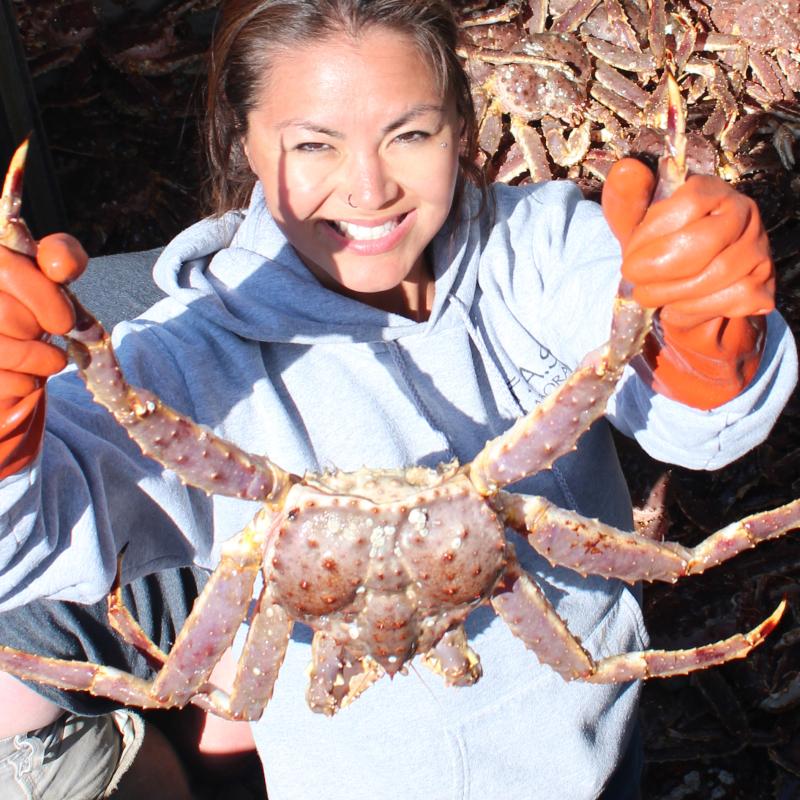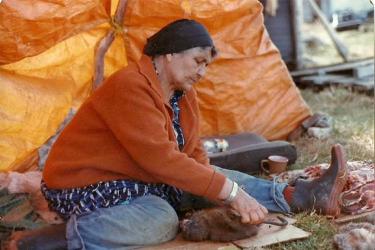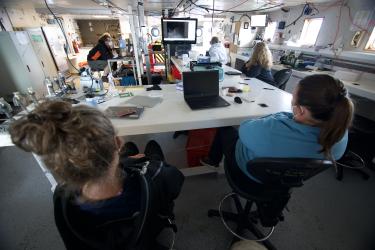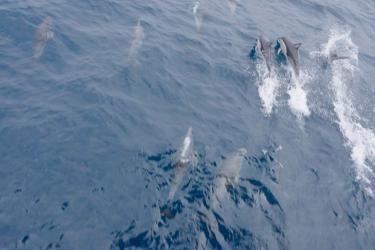I had the great opportunity to be a part of this years’ Alaska Fisheries Science Center Aleutian Islands groundfish bottom trawl survey, where we are collecting important information about Alaska’s marine ecosystems. Our science supports sustainable fisheries and ecosystem-based fisheries management. My team was the last to finalize the Aleutian Islands survey coverage.
The trip started in Adak and ended in Ounalashka (known as Unalaska), where my fellow Unangan (translated “Native people”) cousins have occupied the archipelago—stretching for over 1,300 miles between Alaska and Russia—and lived a unique, amphibious culture for thousands of years on the abundant marine mammals, fish, seabirds and marine invertebrates.
While I refer to these Unangan groups as my fellow cousins, we must remember that there are over 200 Tribes spanning 20 broad cultures. Each of those Alaskan Tribes within those cultures are unique and complex.
In Posts #1 and #2, I characterized the absolute cultural importance of subsistence for all of these Tribes and how it influenced a significant part of their rich histories, which is rooted through oral traditions.
Oral traditions have been shared over many generations to make sense of their worlds while simultaneously recording histories - a commonality amongst Alaska Natives. Even when the written text became predominant, oral traditions still served as a basis for passing down stories, whether it be through songs, art, or personal/place names. Sometimes a story would include practical lessons as a moral for teachings, such as work ethics or respect for animals, among many other principles.
Oral traditions also have shown relevance to climate destabilization. Far before written text, songs and dances depicted the migration of people that crossed Beringia – the ancient land bridge that connected the two. These oral traditions hold a wealth of Indigenous knowledge (often referred to as Traditional Ecological Knowledge and Local Knowledge). They are critical regarding food security/food sovereignty in rural and Indigenous communities in Alaska. Their significance is marked by the changing season’s environment (e.g., calendar of events) - an imperative transformation from one season to the next that controls the patterns of human life.
Another story I want to share is of Tlingit descent. It is a legend about a young boy and his first salmon catch and the importance of returning the fish bones to the river where it was caught, termed the land of the salmon spirits. The boy eventually lived with the salmon to learn the ways of a salmon and understood why it was important to return the bones to the river.
I was born and raised in rural Alaska and am a proud Tribal member of the Native Village of Kiana. The desire to improve local participation and engage Alaskan communities in research development has always been near and dear to my heart. I hope we can generate multiple perspectives to develop a meaningful composite of research ideas and projects.
From Adak to Ounalashka, the sheer beauty was breathtaking. Coupled with knowing what these waters and lands have provided for so many Tribes throughout the centuries, it is nothing less than a miracle. To my fellow Unangan cousins, thank you for allowing me to visit your beautiful home. It was indeed an honor and privilege.
Taikuu (translated “thank you”) to all the members of our team as we worked diligently at our research efforts. Through my position with NOAA Fisheries, I look forward to identifying opportunities to bring together the cultural knowledge and experience of Alaska Native peoples and what is learned through western science to help protect and sustain Alaska’s rich marine ecosystems for the benefit of future generations of Alaskans and all U.S. citizens.






